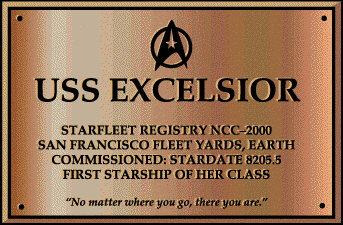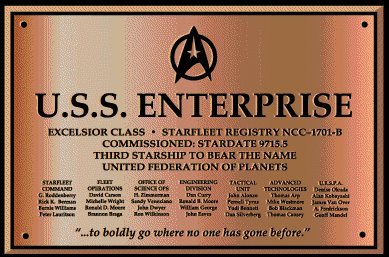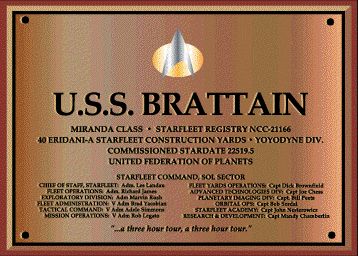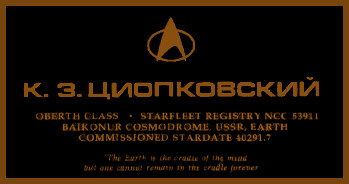

| Starship class | Size | Compliment | Class strength |
|---|---|---|---|
| Excelsior | Exploratory Cruiser | 600 | 30 |
| Hokule'a | Cruiser | 500 | 20 |
| Constitution | Heavy Cruiser | 500 | 10 |
| Constellation | Cruiser | 500 | 50 |
| Renaissance | Light Cruiser | 240 | 30 |
| Miranda | Light Cruiser | 360 | 90 |
| Apollo | Heavy Cruiser | 100 | |
| Phobos | Frigate | 184 | 70 |
| Scimitar | Fast Destroyer | 320 | 50 |
| Saladin/Polaris | Scout/Destroyer | 200 | 100 |
| Phantom | Super Scout | 300 | 10 |
| Akyazi | Perimeter Action Ship | 108 | 50 |
| Dupleix | Perimeter Action Ship | 311 | 50 |
| Okinawa | Frigate | 90 | 130 |
| Oberth | Scout | 80 | 150 |
| Dolland/Doppler | Tug | 220 | 50 |
| Sydney | Transport | 70 | |
| Deneva | Transport | 50 | |
| Antares | Transport | 48 | 150 |
| KNOWN LAUNCH DATES | EARTH YEAR | STARDATE | SOURCE |
| ENTERPRISE 1 | 2151 | - | TAKEN FROM EPISODE 'BROKEN BOW'. |
| ENTERPRISE 1701 | 2245 | - | TAKEN FROM DEDICATION PLAQUE. |
| ENTERPRISE 1701-A | 2286 | 8442.5 | TAKEN FROM DEDICATION PLAQUE. |
| CONSTELLATION 1974 | 2284 | -- | TAKEN FROM RICK STERNBACH ARTICLE. |
| EXCELSIOR 2000 | 2285 | 8205.5 | TAKEN FROM DEDICATION PLAQUE. |
| HATHAWAY 2593 | 2285 | - | TAKEN FROM CHRONOLOGY BOOK. |
| STARGAZER 2893 | 2285 | -- | TAKEN FROM RICK STERNBACH ARTICLE. |
| BRATTAIN 21166 | 2345 | 22519.5 | TAKEN FROM DEDICATION PLAQUE. |
| TSIOLKOVSKY 53911 | 2363 | 40291.7 | TAKEN FROM DEDICATION PLAQUE. |
| GALAXY 70637 | 2356 | - | TAKEN FROM 24TH CENTURY TECH. MANUAL. |
| SUTHERLAND 72015 | 2367 | 44820.5 | TAKEN FROM DEDICATION PLAQUE. |
| DEFIANT 74205 | 2370 | 47538.5 | TAKEN FROM DEDICATION PLAQUE. |
| VOYAGER 74656 | 2371 | 48038.5 | TAKEN FROM DEDICATION PLAQUE. |
| PROMETHEUS 74913 | 2373 | 50749.5 | TAKEN FROM DEDICATION PLAQUE. |




| Fleet Yard | Classes Constructed: |
| Utopia Planitia, Mars | All |
| San Francisco, Earth | All |
| Baikonur Cosmodrome, Earth | Oberth |
| Tranquility Base | Oberth, Miranda |
| Copernicus, Luna | Oberth, Miranda, Constellation |
| 40 Eridani-A | Oberth, Miranda, Constellation |
| Beta Antares | Oberth, Miranda, Constellation |





